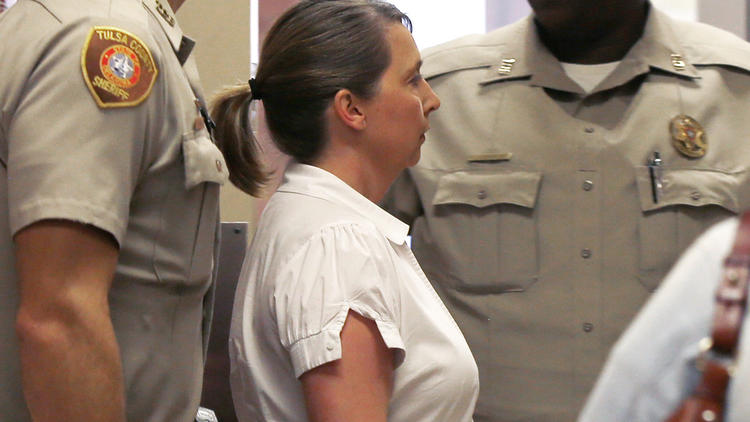Tulsa police officer charged with man slaughter
Tulsa officer Betty Shelby led from the Tulsa County Sheriff’s Office into the courtroom Sept. 30. Photo courtesy of the Chicago Tribune. (Sue Ogrocki/AP) http://www.chicagotribune.com/news/nationworld/ct-tulsa-officer-betty-shelby-police-shooting-20161001-story.html
October 4, 2016
On September 16, 2016 an unarmed black man was fatally shot by a white Tulsa police officer.
Police in Tulsa, Oklahoma have released footage from the shooting.
Terence Crutcher, a 40-year-old father of four, was shot by a Tulsa cop responding to a call about a car that Crutcher had seemingly abandoned in the middle of a road. The man was unarmed and, in most of the released footage, had his hands raised over his head.
Moments before they captured footage of Crutcher’s death, police cameras recorded Crutcher walking toward his car with his hands above his head while several officers followed closely behind with weapons raised.
He lingered at his vehicle’s driver’s side window, his body facing the SUV, before slumping to the ground a second later.
“Shots fired!” a female voice can be heard yelling in video footage released Monday, three days after the deadly encounter.
The officer Betty Shelby, who was shown on video fatally shooting the unarmed man, has been charged with first-degree manslaughter, authorities said.
Tulsa District Attorney Steve Kunzweiler filed a “heat-of-passion” manslaughter charge against officer Shelby nearly a week after cameras filmed her shooting 40-year-old Terence Crutcher as he stood beside his stalled SUV.
Shelby “reacted unreasonably and became emotionally involved to the point that she overreacted,” the prosecutor’s office said in an affidavit.
She was formally arrested and booked into the Tulsa Jail at 1 a.m. Friday, according to county records. She posted a $50,000 bond and was released from jail 20 minutes after she was booked.
While this definitely shines a light on the race-inclusive mentality of some behind the Blue Line, the disproportionate number of African American people targeted by police shows that the race of the citizen is still a deciding factor in how he or she is treated.
From the Civil Rights era of hoses, tear gas and dogs, to the iconic imagery of the late-Rodney King being beaten by officers, America has a special and urgent need to understand the pathology behind police brutality.

